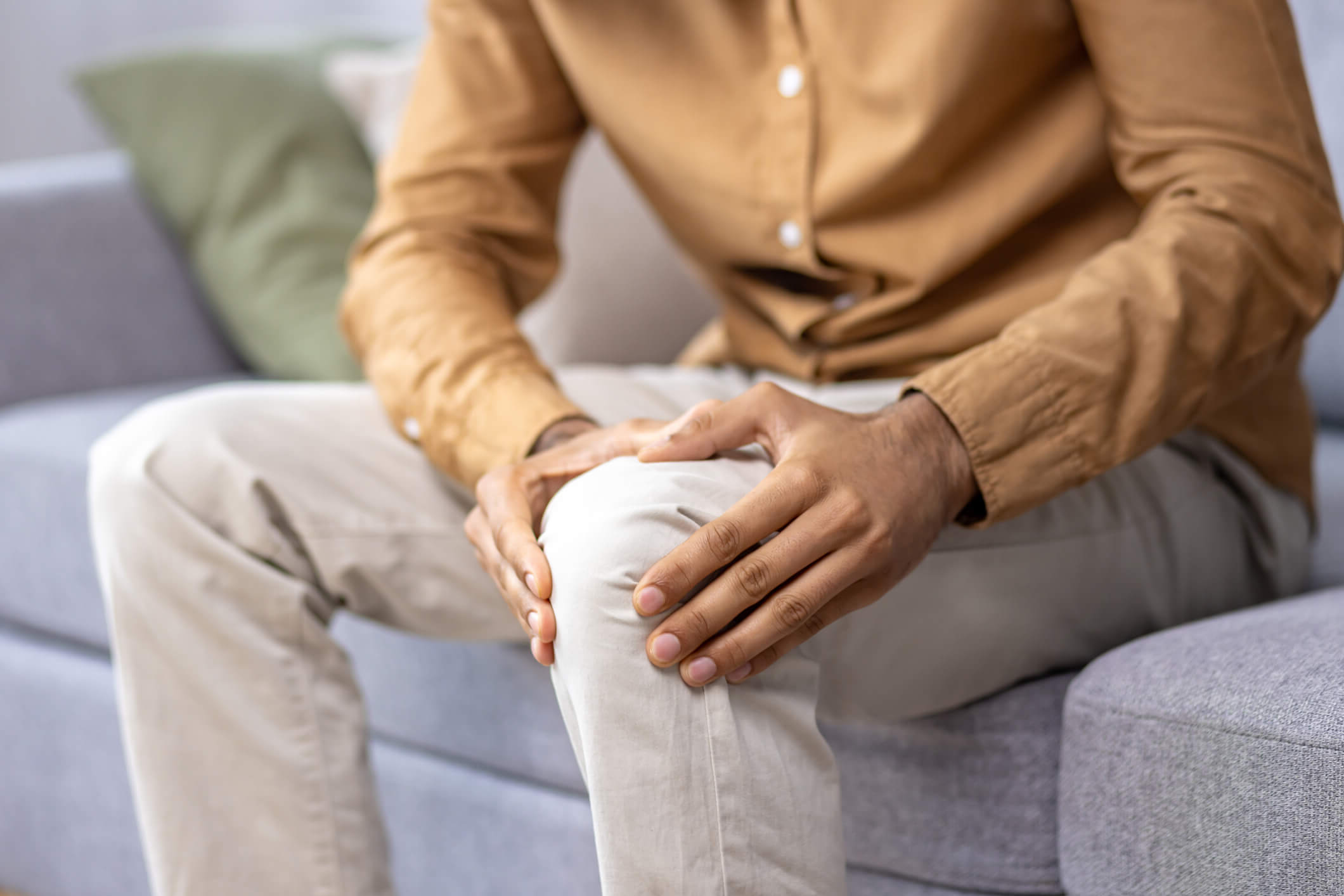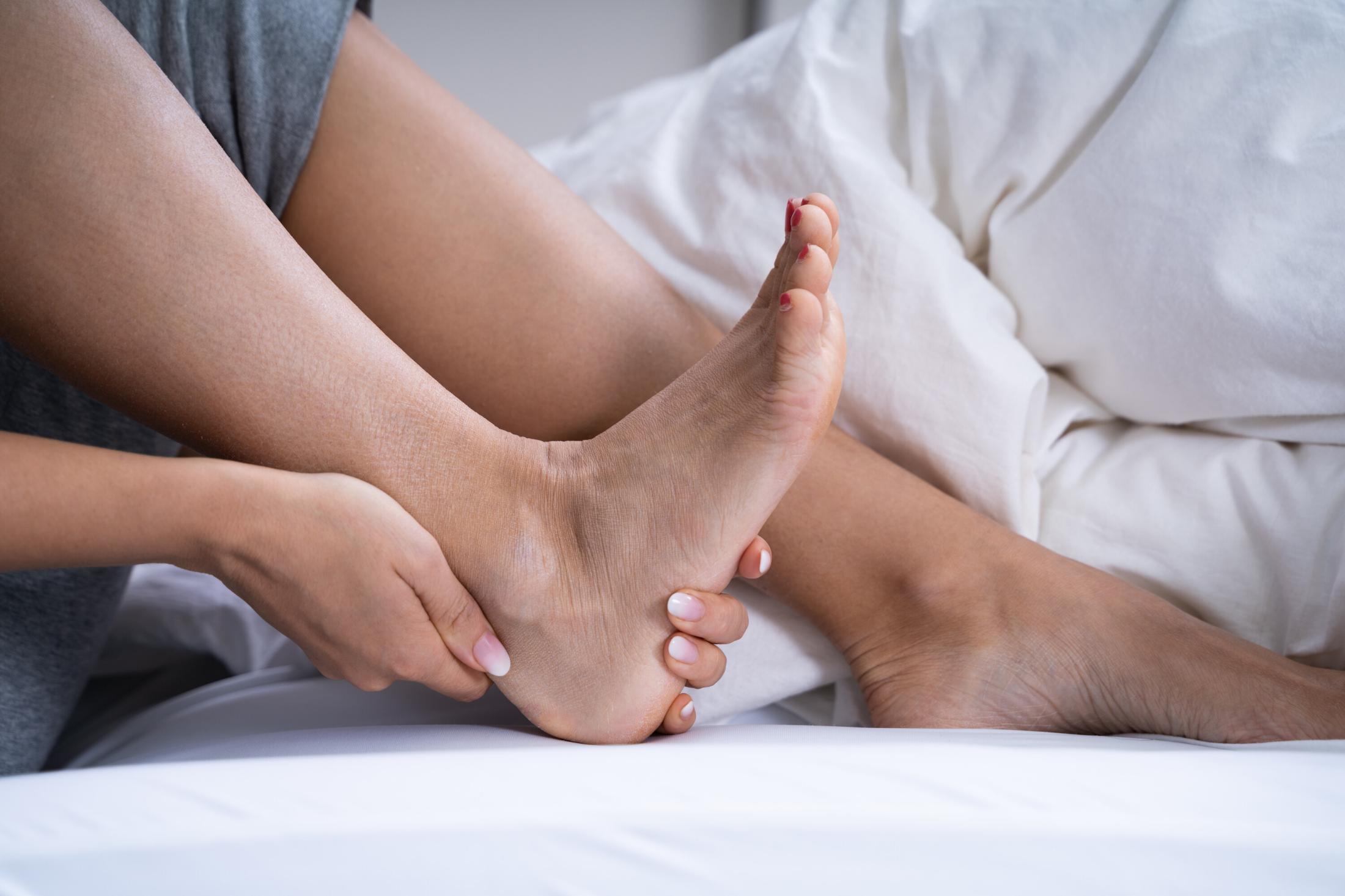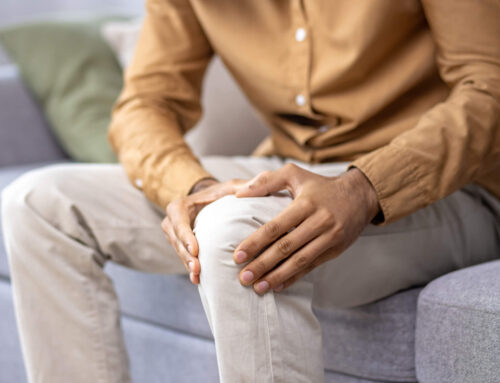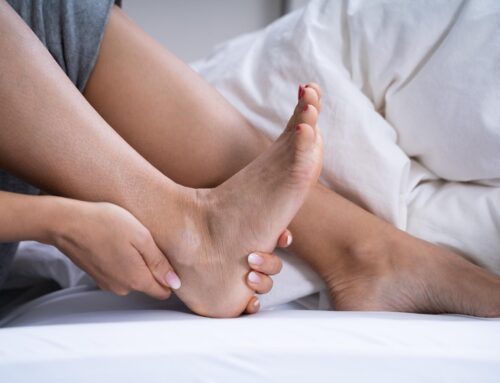Our feet bear the weight of our bodies, absorbing impact with every step and influencing posture, balance, and movement. When foot support is inadequate, it can lead to discomfort and even long-term health issues, such as joint pain, back problems, or poor mobility. For individuals seeking relief from foot pain or improved support, there are two primary options: custom orthotics and off-the-shelf insoles.
Custom orthotics are specially designed to address unique foot conditions, offering a tailored solution for specific needs. In contrast, off-the-shelf insoles are pre-made, readily available in stores, and designed to provide general foot support for a wide range of users.
While both options can enhance comfort and alleviate minor foot discomfort, they differ significantly in terms of customization, effectiveness, and cost.
What Are Off-The-Shelf Insoles?
Off-the-shelf insoles are pre-manufactured foot support products designed to fit a wide range of shoe sizes and foot types. Unlike custom orthotics, which are tailored to an individual’s unique needs, off-the-shelf insoles are mass-produced and readily available at most pharmacies, sports stores, and online retailers.
They are an affordable and convenient option for those seeking quick relief from minor foot discomfort or additional cushioning in their shoes.
Common Materials and Types
Off-the-shelf insoles come in various materials and designs to cater to different needs:
- Foam Insoles provide basic cushioning and are ideal for light support.
- Gel Insoles offer enhanced shock absorption for activities like walking or running.
- Memory Foam Insoles mold slightly to the foot for added comfort and support.
- Orthotic-Style Insoles provide moderate arch support and are designed for people with mild foot issues like overpronation.
- Therapeutic Insoles include features like extra cushioning for diabetic or sensitive feet.
Benefits of Off-The-Shelf Insoles
One of their biggest benefits of off-the-shelf insoles is affordability, as they are significantly less expensive than custom orthotics, making them an accessible option for many. They are also highly convenient, requiring no prescription or professional fitting, allowing users to purchase and use them immediately.
Off-the-shelf insoles are versatile, available in a variety of styles and materials to suit different types of footwear and activity levels. They provide effective temporary relief, helping to alleviate mild discomfort or fatigue caused by prolonged standing or walking.
While off-the-shelf insoles can be effective for general use, it’s important to note that they may not provide adequate support for individuals with specific or chronic foot conditions. In such cases, custom orthotics may be a more appropriate solution.
What Are Custom Orthotics?
Custom orthotics are personalized medical devices specifically designed to address the unique structure and needs of an individual’s feet. Unlike off-the-shelf insoles, custom orthotics are crafted based on detailed assessments and are tailored to provide optimal support, alignment, and pain relief. They are often recommended by healthcare professionals for individuals with specific foot conditions, mobility issues, or chronic pain.
How Are Custom Orthotics Designed?
Custom orthotics are created through a meticulous process that ensures they match the unique contours and biomechanics of the wearer’s feet.
- Foot Assessment
A healthcare professional, such as a podiatrist, performs a thorough evaluation of your feet. This may include examining your posture, gait, and pressure points to understand how your feet function during movement. - Impressions or Scans
A precise mold or 3D scan of your feet is taken to capture their exact shape and size. This ensures the orthotics fit perfectly and provide targeted support. - Customization
The orthotics are designed and fabricated using high-quality materials tailored to your specific needs. Features like arch support, heel cushioning, or additional padding may be incorporated depending on your condition. - Fitting and Adjustments:
Once the custom orthotics are created, they are fitted into your shoes, and any necessary adjustments are made to ensure maximum comfort and effectiveness.
Advantages of Custom Orthotics
Custom orthotics provide a range of benefits that surpass the capabilities of off-the-shelf insoles. They offer targeted support, specifically designed to address foot conditions such as plantar fasciitis, flat feet, or bunions. By improving biomechanics, custom orthotics help correct misalignments and redistribute pressure, reducing strain on the feet, knees, hips, and lower back.
Their enhanced comfort ensures a perfect fit, eliminating common issues like rubbing, slipping, or inadequate support. Crafted from premium materials, custom orthotics are highly durable, lasting significantly longer than generic insoles.
They are versatile and can be tailored for various types of footwear, from athletic shoes to dress shoes, ensuring consistent support in any situation.
Custom orthotics are an excellent investment for anyone dealing with chronic foot pain or requiring specialized support. By addressing the root cause of foot problems, they can significantly enhance mobility, comfort, and overall quality of life.
Differences Between Custom Orthotics and Off-The-Shelf Insoles
Choosing between custom orthotics and off-the-shelf insoles starts with understanding their key differences in design, effectiveness, and overall value.
Personalization
- Off-The-Shelf Insoles: These are mass-produced and designed to fit the general population. While they come in various sizes and styles, they lack the ability to address unique foot shapes or specific medical conditions.
- Custom Orthotics: Custom orthotics are uniquely tailored to an individual’s foot structure, gait, and biomechanical needs. They are designed to provide precise support and alignment, making them ideal for individuals with specific requirements.
Effectiveness in Treating Foot Conditions
- Off-The-Shelf Insoles: These insoles provide basic cushioning and arch support, making them effective for minor discomfort or temporary relief. However, they may not adequately address chronic or severe foot issues.
- Custom Orthotics: Custom orthotics are designed to treat specific medical conditions such as plantar fasciitis, flat feet, bunions, or arthritis. They provide targeted relief by redistributing pressure and correcting alignment, which can prevent further complications and enhance mobility.
Cost and Durability
- Off-The-Shelf Insoles: Off-the-shelf insoles are an affordable option, with prices ranging from low to moderate depending on the material and brand. However, they are less durable and often require frequent replacement due to wear and tear.
- Custom Orthotics: Although custom orthotics involve a higher initial investment, they are crafted from premium materials built to withstand long-term use. Their durability and tailored design make them a cost-effective solution over time, especially for those with ongoing foot care needs.
Comparison Chart
| Off-The-Shelf Insoles | Custom Orthotics | |
|---|---|---|
| Personalization | Mass-produced and designed to fit the general population. Available in various sizes and styles but lack the ability to address unique foot shapes or specific medical conditions. | Uniquely tailored to an individual’s foot structure, gait, and biomechanical needs. Provide precise support and alignment, ideal for specific requirements. |
| Effectiveness in Treating Foot Conditions | Provide basic cushioning and arch support, effective for minor discomfort or temporary relief. May not address chronic or severe foot issues adequately. | Designed to treat specific medical conditions such as plantar fasciitis, flat feet, bunions, or arthritis. Provide targeted relief by redistributing pressure and correcting alignment. |
| Cost and Durability | Affordable option with prices ranging from low to moderate depending on material and brand. Less durable, requiring frequent replacement. | Higher initial investment but crafted from premium materials for long-term use. Durable and cost-effective over time, especially for ongoing foot care needs. |
Who Benefits Most from Custom Orthotics?
Custom orthotics are not a one-size-fits-all solution, but for those with specific needs, they can be life-changing.
Diagnosed Foot Conditions or Chronic Pain
Custom orthotics are highly effective for individuals suffering from foot-related medical conditions or chronic pain. For those with plantar fasciitis, custom orthotics provide targeted support to alleviate strain on the plantar fascia, reducing pain and inflammation.
People with flat feet or high arches benefit from tailored arch support, which helps distribute pressure evenly and improves foot alignment. Anyone diagnosed with arthritis or diabetes can rely on custom orthotics to reduce pressure points and provide extra cushioning, preventing complications such as ulcers or joint pain.
- Custom orthotics provide support to alleviate the strain on the plantar fascia, reducing pain and inflammation.
- Tailored arch support helps distribute pressure evenly and improves foot alignment.
- Orthotics can reduce pressure points and provide extra cushioning to prevent complications like ulcers or joint pain.
- For those dealing with persistent discomfort, custom orthotics offer targeted relief by addressing the root cause of the issue.
Athletes or Those with High Activity Levels
The physical demands of training and competition place stress on the feet, increasing the risk of injuries. Custom orthotics enhance performance by optimizing foot alignment and balance, reduce the risk of overuse injuries like shin splints or stress fractures, and provide additional support for high-impact activities such as running or jumping. Whether you’re a professional athlete or an active individual, custom orthotics can help maintain foot health and boost overall performance.
- Enhance performance by optimizing foot alignment and balance.
- Reduce the risk of overuse injuries, such as shin splints or stress fractures.
- Provide additional support during high-impact activities like running or jumping.
Whether you’re a professional athlete or someone who enjoys regular physical activity, custom orthotics can help maintain foot health and improve overall performance.
Specialized Support for Balance or Gait Correction
For individuals requiring specialized support for balance or gait correction, custom orthotics can make a significant difference. They correct misalignments, promoting better posture and improved balance. By addressing biomechanical inefficiencies, custom orthotics ensure smoother and more stable movement, reducing the risk of falls or injuries caused by improper foot mechanics. These personalized devices are an essential tool for those with unique support needs, enhancing both mobility and quality of life.
- Correct misalignments, promoting better posture and balance.
- Address biomechanical inefficiencies, ensuring smoother and more stable movement.
- Reduce the risk of falls or injuries caused by improper foot mechanics.
When Are Off-The-Shelf Insoles a Suitable Option?
Off-the-shelf insoles provide a practical solution for certain scenarios, making them a convenient choice for many people.
Ideal for Minor or Temporary Discomfort
Off-the-shelf insoles are a quick and easy fix for individuals experiencing:
- Mild foot fatigue from prolonged standing or walking.
- Occasional discomfort caused by improper shoe fit.
- General aches or soreness that doesn’t require medical attention.
While they may not provide the same level of support as custom orthotics, they can offer relief for short-term or less severe issues.
Off-The-Shelf Insoles are Cost-Effective Choice for Light, Occasional Use
For those who need additional cushioning or basic arch support without the expense of custom orthotics, off-the-shelf insoles are an affordable alternative. They are particularly beneficial for:
- People who don’t use insoles daily but need occasional support for specific activities.
- Individuals on a budget who want a low-cost way to improve comfort in their footwear.
Situations Where Professional Assessments Aren’t Needed
Not every foot concern requires a custom solution. Off-the-shelf insoles are suitable for:
- General support for healthy feet with no underlying medical conditions.
- Enhancing comfort in shoes that lack adequate padding or support.
- Individuals who don’t require specialized adjustments or ongoing treatment.
Off-the-shelf insoles are an accessible and practical option for those looking to improve foot comfort without significant investment. However, for chronic pain, structural issues, or long-term use, consulting a professional about custom orthotics may be a better approach.
Finding the Right Support for Your Feet
Understanding the key differences between custom orthotics and off-the-shelf insoles can help you make an informed decision about your foot health. While off-the-shelf insoles provide a convenient and cost-effective option for minor or temporary discomfort, custom orthotics offer a personalized solution for chronic pain, medical conditions, and long-term support.
Choosing the right option depends on your individual needs, lifestyle, and health goals. Seeking professional advice is the best way to ensure you receive the proper fit and support for your feet. At Care-Med, our experienced team is ready to guide you through the process, whether you need custom orthotics tailored to your unique requirements or access to high-quality off-the-shelf insoles.
Contact Care-Med to schedule your foot assessment and discover the perfect solution for your comfort and well-being.
Share This Story, Choose Your Platform!
Table of Contents
- Choosing Between Custom Orthotics and Off-The-Shelf Insoles
- What Are Off-The-Shelf Insoles?
- What Are Custom Orthotics?
- Differences Between Custom Orthotics and Off-The-Shelf Insoles
- Who Benefits Most from Custom Orthotics?
- When Are Off-The-Shelf Insoles a Suitable Option?
- Finding the Right Support for Your Feet
We specialize in orthotics, body braces, and compression wear tailored to your unique needs in Toronto. Reach out to us at info@caremed.care or call 416-782-5353 to book your fitting and consultation.
Experience the difference of customized solutions designed just for you.











